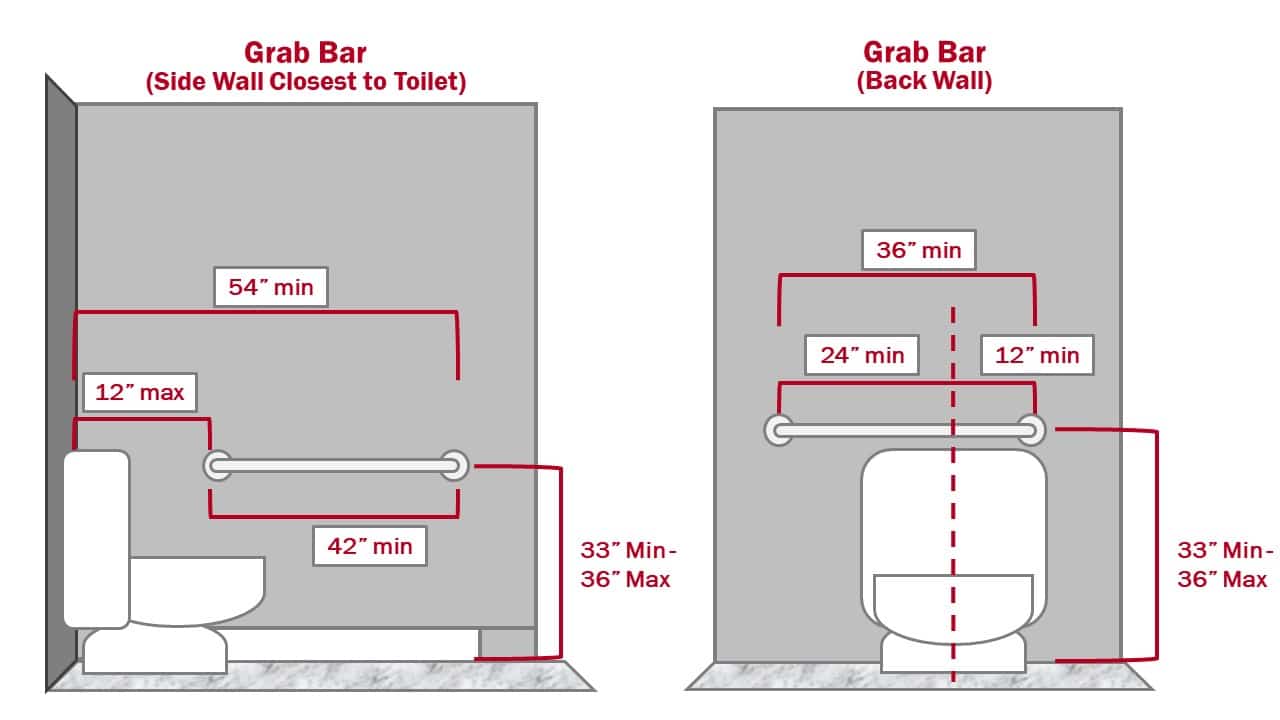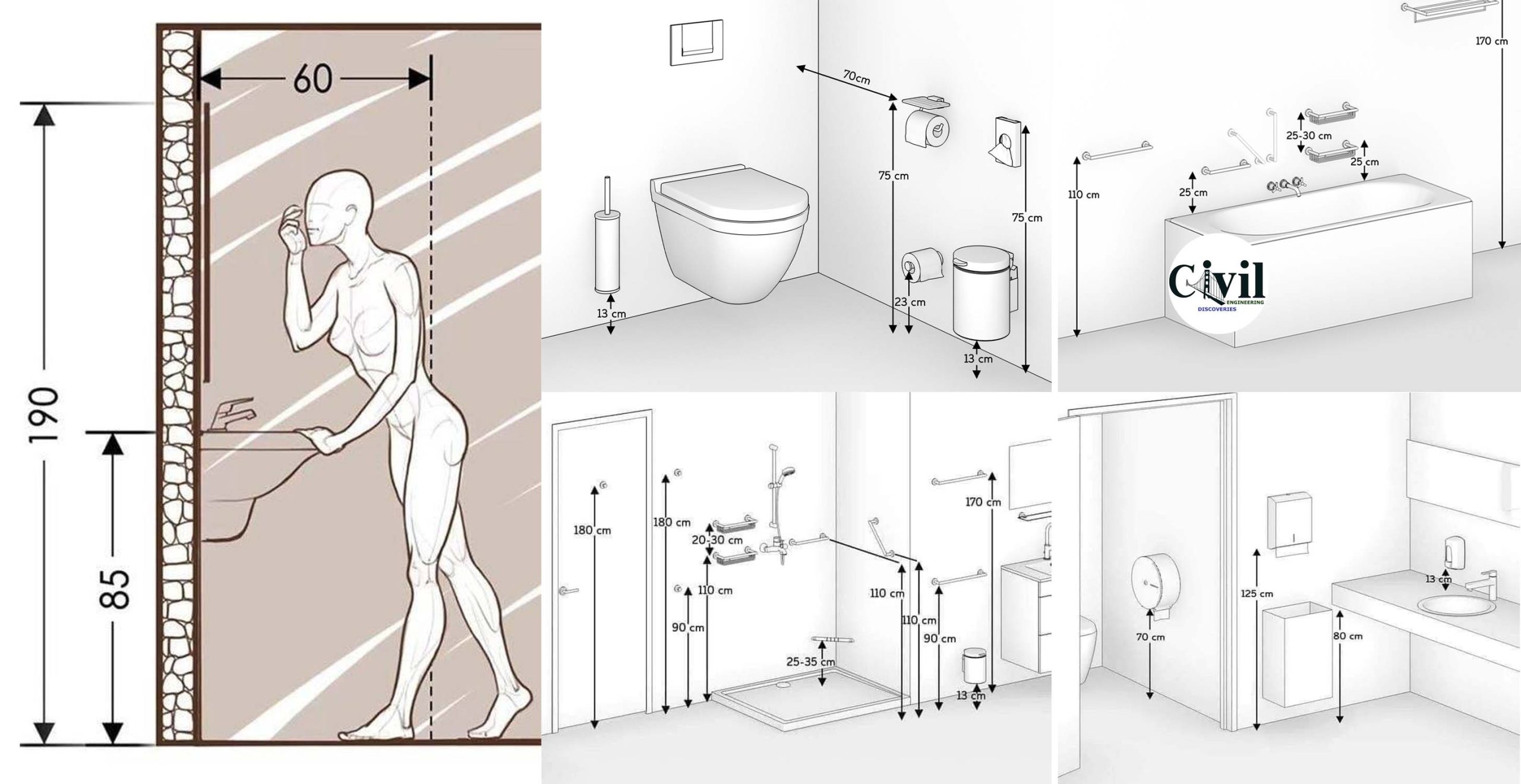Standard Bathroom Toilet Heights

Toilet height is a crucial factor for comfort and accessibility, especially in bathroom design. While it may seem like a minor detail, the height of your toilet can significantly impact your experience, especially for people with mobility issues.
Toilet Height Standards Around the World
The standard height of toilets varies depending on the region and country. Here’s a comparison of average toilet heights in the US, Europe, and Asia:
| Region | Average Toilet Height (inches) |
|---|---|
| United States | 15-17 |
| Europe | 16-18 |
| Asia | 14-16 |
Historical Evolution of Toilet Heights
The height of toilets has evolved over time, driven by changing lifestyles and accessibility needs. Early toilets were typically much lower, often built into the floor.
“In the early 20th century, the average height of toilets was around 14 inches. This was considered comfortable for most people at the time.”
As people grew taller and more aware of accessibility needs, the height of toilets began to increase. In the 1960s and 1970s, the standard toilet height in the US rose to 15 inches. This change was partly due to the growing popularity of raised toilet seats, which were designed to make it easier for people with mobility issues to use the toilet.
“The Americans with Disabilities Act (ADA) of 1990 mandated a minimum toilet height of 17 inches for public restrooms.”
This mandate led to a significant shift in toilet design, with many manufacturers now producing toilets that meet the ADA standards. As a result, the standard height of toilets has continued to rise in recent years, with many new toilets being built at 17 inches or higher.
Factors Influencing Toilet Height Choice

Choosing the right toilet height is crucial for comfort, safety, and accessibility. It’s not just about aesthetics; it’s about ensuring a comfortable and safe experience for everyone using the bathroom. There are several factors to consider when making this decision.
User Height
User height is a significant factor in determining the appropriate toilet height. Taller individuals may find standard-height toilets uncomfortable, as they may have to bend too far, leading to back strain. Shorter individuals may find standard-height toilets difficult to use, as they may not be able to reach the seat comfortably.
The ideal toilet height for a user should allow them to sit comfortably with their knees slightly lower than their hips.
Accessibility Needs, Heights of bathroom toilets
Accessibility is paramount for individuals with disabilities or mobility limitations. Higher toilet seats can be beneficial for people who have difficulty bending or standing. For example, seniors or individuals with knee or hip problems may find it easier to use a higher toilet.
Design Preferences
Beyond functionality, toilet height can also contribute to the overall design aesthetic of the bathroom. Some prefer the sleek look of a standard-height toilet, while others may find a taller toilet more aesthetically pleasing.
Choosing a toilet height that complements the bathroom’s style and design is essential.
Advantages and Disadvantages of Different Toilet Heights
| Toilet Height | Advantages | Disadvantages | User Group |
|---|---|---|---|
| Standard (15 inches) | – Fits most standard bathroom designs. – Widely available. |
– May be uncomfortable for taller individuals. – May be difficult to use for shorter individuals. |
Average height individuals. |
| Comfort Height (17 inches) | – More comfortable for taller individuals. – Easier to stand up from for individuals with mobility limitations. |
– May not fit all bathroom designs. – May be too high for children. |
Taller individuals, seniors, individuals with mobility limitations. |
| Extra-High (19 inches) | – Provides maximum comfort and accessibility for individuals with significant mobility limitations. | – May not fit most bathroom designs. – May be difficult to use for children. |
Individuals with significant mobility limitations. |
Impact of Toilet Height on User Experience: Heights Of Bathroom Toilets

The height of a toilet plays a crucial role in user experience, influencing comfort, posture, and ease of use. The right toilet height can enhance comfort, reduce strain on joints, and improve overall bathroom experience. Let’s explore how toilet height impacts user experience.
Influence of Toilet Height on Comfort and Posture
The height of a toilet directly affects the user’s posture while sitting and standing. A toilet that is too low can cause discomfort and strain on the knees, back, and hips, particularly for individuals with limited mobility or those who are taller. Conversely, a toilet that is too high can lead to difficulty standing up, especially for shorter individuals or those with balance issues.
User Experience with Different Toilet Heights
- Standard Height Toilets: Standard height toilets, typically 15 inches from the floor, are designed for average-height individuals. They offer a comfortable sitting position for most users but may not be ideal for those who are taller or shorter.
- Comfort Height Toilets: Comfort height toilets, also known as “high-profile” toilets, are generally 17 inches tall. These toilets are designed to provide a more comfortable sitting position, especially for taller individuals. They allow users to sit with their knees at a slightly higher angle, reducing strain on the hips and back.
- Extra-Height Toilets: Extra-height toilets, ranging from 19 to 20 inches tall, are specifically designed for individuals with limited mobility or those who require extra assistance when sitting and standing. These toilets offer a more comfortable and accessible sitting position, making it easier for users to transfer from a wheelchair or other mobility devices.
Relationship Between Toilet Height and Ergonomic Factors
The table below illustrates the relationship between toilet height and ergonomic factors, highlighting the potential benefits and drawbacks of each height:
| Toilet Height | Benefits | Drawbacks |
|---|---|---|
| Standard (15 inches) | Suitable for most users | May be uncomfortable for taller individuals |
| Comfort Height (17 inches) | More comfortable for taller individuals | May be too high for shorter individuals |
| Extra-Height (19-20 inches) | Ideal for individuals with mobility issues | May be difficult to use for shorter individuals |
Heights of bathroom toilets – Finding the perfect toilet height for your bathroom can be a personal journey. Some people prefer a higher seat for ease of access, while others find a lower height more comfortable. If you’re also considering a corner bathroom double vanity , you’ll want to ensure the toilet height complements the overall design.
Ultimately, the most important factor is choosing a height that feels right for you, creating a bathroom that’s both functional and aesthetically pleasing.
The perfect bathroom height is a matter of personal preference, but it’s something to consider when designing your space. A rainforest green marble bathroom, like the one featured in this article , might inspire you to go for a more luxurious feel, but the toilet height should always prioritize comfort and ease of use.